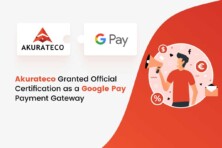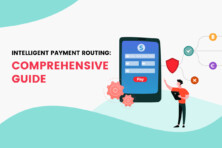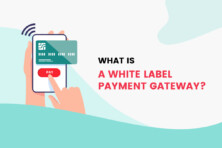
Vladimir Kuiantsev
CEO of Akurateco
An e-money institution is an enterprise authorized to issue electronic money (a digital version of good ole’ cash). In Europe alone, the number of these enterprises reaches a whopping 479 with the United Kingdom being home to more than a half of these EMIs.
They offer a variety of services (from personal banking to issuing elite cards and facilitating cross-border money transfer). Moreover, they all cater to different segments of the population.
Yet, there’s one struggle they are all dealing with on a regular basis.
And it’s not the Brexit aftermath.
It’s the cost of developing and maintaining a payment gateway.

How to minimize payment gateway costs for e-money institutions. Source: unsplash.com
What’s a payment gateway?
A payment gateway is a piece of software used to facilitate online payment processing. It’s the merchants’ way of accepting transactions online through their websites, mobile applications, etc. In other words, it is the system that transfers funds from the client’s card to the merchant account after the former clicks “Pay Now”.
The cost of a payment gateway for an EMI
With the transaction taking up to a few seconds, it might sound insane that the cost of the development and maintenance of the system facilitating it reaches up to 420K USD. However, it really is so.
In case you decide to build such a system from scratch, here are the rough numbers to give you an idea of what you’re getting into.
For starters, you’ll need to hire a team of senior developers with a background in payments. You’ll most likely need three developers, a QA specialist, and an Information Security Officer to get started. On average, salary expectations of specialists of this sort start at 3.5K USD a piece leaving you with 17.5K USD in salary expenses every month.
You might also like – How to spend 50% less on payment processing with white-label payment software
From our experience and that of our partners from the industry, we’ll say that the development of the system will take from six months to two years. Six months are what the team needs to build the basic functionality. However, note that “basic” is never enough. With the growing expectations of the customers, the requirements to the payment gateway are ever so high! So, keep your pockets wide open and be ready to dedicate at least two years to the development of the system truly worthy of the attention of your customers.
This leaves you at 420K USD for the development.
Unfortunately, this is not it in terms of finances. From the moment of your launch, the developers on your team will switch from developing to maintaining the gateway. Plus, you will also need to hire two or three payment specialists to closely monitor and manage the transaction flow. This will cost you up to 10.5K USD a month, too.
Only a few of the newly-established EMI can afford to spend this money on the development of the payment software. So, what are their other options?
A white-label payment gateway
It goes without saying that a white-label payment gateway can be a game-changer for an EMI. It allows you to legally resell a payment gateway fully branded according to your company’s style guidelines as your own. You get a cutting-edge system without having to pay for its development or maintenance.
Besides, such systems typically come with a wide range of innovative features your EMI business can benefit from.
Core functionality of a white-label payment gateway
1. Smart routing.
Smart routing at its core is an attempt to increase a transaction approval ratio using rules and triggers to route transactions. This feature allows you to send every transaction to a predefined channel that is most likely to accept it. Smart routing is a life saver for high-risk business owners. Yet, it is also loved and cherished by low-risk ventures.
With this feature, you provide your customers with an uninterrupted checkout experience and, thus, boost your brand’s image and strengthen customer loyalty.
2. Smart invoicing.
Probably one of the most sought-after features, smart invoicing allows you to dynamically predefine what to charge your customer for. To set it up, you need to choose payment actions and triggers for every client in particular. As a result, you get to seamlessly charge clients more by establishing a flexible fee structure.
Besides, you save a company’s time and resources by automating the process, simplifying the invoice management, and reducing the processing costs in the customer’s favor with fees customization.
Unfortunately, this unorthodox feature is yet not as popular among payment software providers as one would hope. The good news, though, is that Akurateco does offer it. So, if you’re interested, we’d be happy to introduce you to our system.
You might also like – Smart Invoicing technology explained
3. Tokenization.
While often underrated, tokenization is truly the way to your customer’s heart. It simplifies your customer’s shopping experience by enabling one-click payments. And considering that it is accompanied by full compliance with top-of-the-industry security standards, this feature is a real gem.
4. Cascading.
While smart routing helps prevent declined transactions by routing them to channels that are most likely to accept them, cascading offers a distribution solution for already declined payments.
The system allows the merchant to track and understand the reason for every decline, analyze them and help make better business decisions based on hard data.
5. Fraud prevention engine.
Online fraud is a real pain.
In fact, 82% of organizations were hit by one of its forms in 2018, reports the Association of Finance Professionals.
It can be one of the biggest threats to your EMI business unless you choose a payment gateway compliant with the highest security standards. Consider working with a white-label payment system that like Akurateco is compliant with PCI DSS – and you’ll save both time and money on the red tape by letting the professionals take care of your data protection.
Final word
A white-label payment platform often is an answer to the struggle of EMI owners with the costly development and maintenance of a payment solution. In a matter of days or weeks, you receive a fully customizable payment system. Zero development cost. And up to 50% saved on payment processing.
Sounds too good to be true? We get it. But the solution is real. If you’re looking for a white-label payment provider, Akurateco is your go-to solution. You can schedule a free Demo of the system to see what we offer by filling out this form. I look forward to working with you!
Vladimir Kuiantsev is the CEO of Akurateco, a cutting-edge SaaS platform with 70+ connectors catering to international businesses. With 10+ years of experience in the payment industry, he’s successfully founded and grown two major payment startups before becoming an executive at Akurateco.
SEE ALSO:









